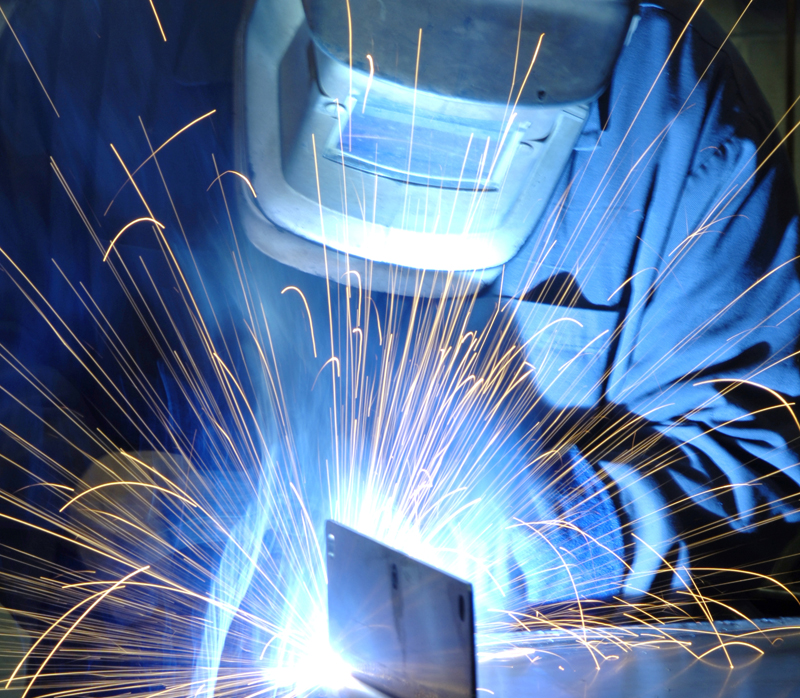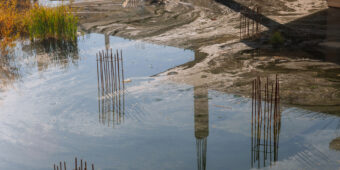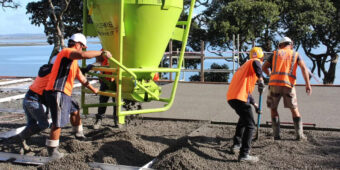Welding safety tips
26 May 2015, Prove Your Know How, Safety

Eyes and hands are generally the first body parts protected when preparing to weld, but there are some other precautions often overlooked that are equally important to workplace safety
There are number of things you need to consider when welding. While wearing eye protection and gloves is a good place to start, we’ve put together the following guide to ensure that you and your colleagues remain safe.
Skin
Any bare skin is at risk of thermal burns from sparks and other hot material. Another risk is intense ultra-violet rays, which cause sunburn. Like sunburn, the exposed area increases the likelihood of skin diseases such as dermatitis, cancer and melanoma.
It’s best to wear long-sleeved shirts/overalls with the top button done up. Avoid the urge to carry out ‘tacking’, while just turning your face away from the arc.
Limbs
We often have to assume static positions for long periods during welding, which can lead to a greater reliance on your heart to push the blood around your body as the ‘static’ muscles are not flexing.
This increases the presence of toxic residues, like lactic acid in muscle tissue, which can cause fatigue and increase the potential for injury. To reduce the chances of this occurring, stretch and take regular breaks throughout the day.
Respiratory
When welding, we are literally right in the thick of it. We can’t see the clouds of fume spiraling away from the arc through the darkened helmet lens. This can make us a little too relaxed about what we could be inhaling. Almost all constituents of the various welding methods can cause serious health effects over time, even death. You can protect yourself in a numbers ways:
- Extraction at source – use of mechanical devices that draw the fumes away and filter harmful particulates out, before releasing them into the atmosphere.
- Filtered respirator – usually in the form of a silicon half mask, with appropriate filters, or a more specialised welding helmet attached to a belt-mounted battery operated air pump, which pumps filtered air into the helmet. This not only provides cool, filtered air, but also creates a higher-pressure zone inside the helmet, which excludes entry to the fume and smoke.
- Disposable masks – these are lightweight, comfortable and, provided the right type is chosen (fume and particulate), they provide a reasonable degree of protection as long as they fit well.
Respirators and masks are most effective when they form a good seal around your face. Bear in mind that the amount of facial hair you have can significantly reduce the filtering ability of your chosen respirator or mask.
Electricity
As the majority of welding processes use electricity, it is surprising how few people actually carry out a safety check of their plant and equipment before use:
- Inspect all leads and equipment before each use.
- Have equipment tested and tagged by a competent person.
- Use a residual current device (RCD) or Lifeguard.
- Have repairs made by a licensed electrical worker.
- Replace damaged equipment.
Work area
Consider your work area when welding. Have firefighting equipment nearby and use a welding screen to protect those around you from light radiation. Using a fire blanket to protect items around you can prevent accidental ignition caused by sparks.
When you are welding in a confined space, there are additional steps you should take to make your work area safe:
- Having a trained and alert observer overseeing the work.
- Having a rescue plan in place with entry/exit points sorted.
- Consider testing the air with a monitoring device: over time, toxic gasses can deplete oxygen levels to unsafe levels.
- Ventilate the area: welding can heat up a confined space, so takes regular breaks and ventilate the area as much as possible.
- Check if the job requires a hot work permit from WorkSafe NZ.
The next time you begin your welding project, consider going beyond just eye and hand protection, so that you can go home in the same condition you left in. If you need help with welding safety, start with the free ‘Ask an Advisor’ section on the Site Safe website and we’ll be happy to help.
About Site Safe
Site Safe is a not-for-profit, membership based organisation that promotes, inspires and supports a culture of health and safety in New Zealand construction.
Register to earn LBP Points Sign in



